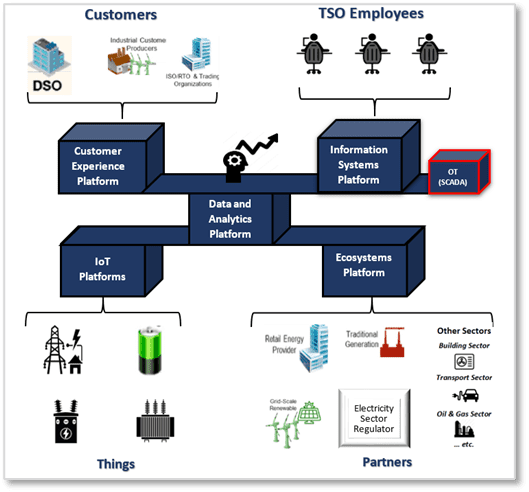
The new distributed energy market imposes new data and analytics architectures
Introduction
Part 1 provided a conceptual-level reference architecture of a traditional Data and Analytics (D&A) platform.
Part 2 provided a conceptual-level reference architecture of a modern D&A platform.
Part 3 highlighted the strategic objectives and described the business requirements of a TSO that modernizes its D&A platform as an essential step in the roadmap of implementing its cyber-physical grid for energy transition. It also described the toolset used to define the architecture requirements and develop the future state architecture of TSO’s D&A platform.
This part maps the business requirements described in part 3 into architectural requirements. It also describes the future state architecture and the implementation approach of the future state D&A platform.
TRANSPOWER Future state Architectural Requirements
In order to develop the future state architecture, the business requirements described in part 3 are first mapped into high-level architectural requirements. These architectural requirements represent the architectural building blocks that are missing or need to be improved in each domain of TRANSPOWER enterprise architecture in order to realize the future state architecture. Table 1 shows TRANSPOWER high-level architectural requirements.
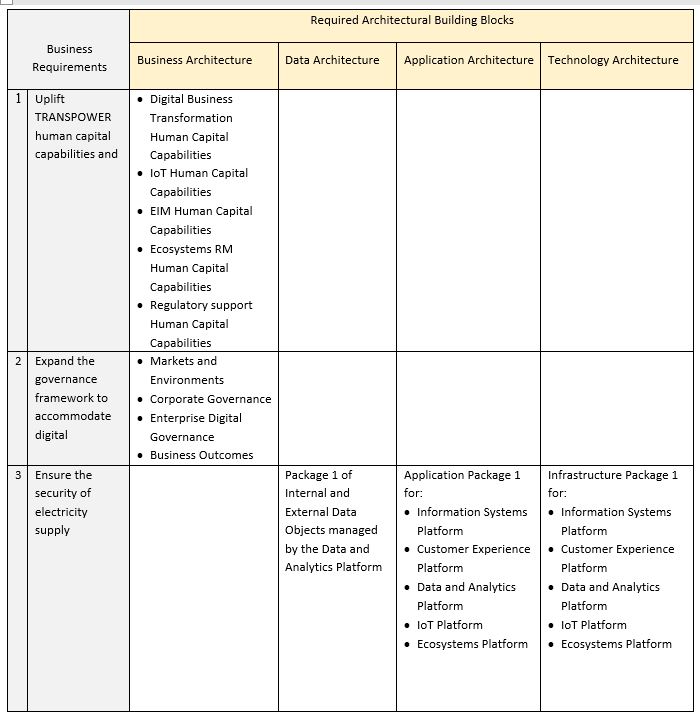
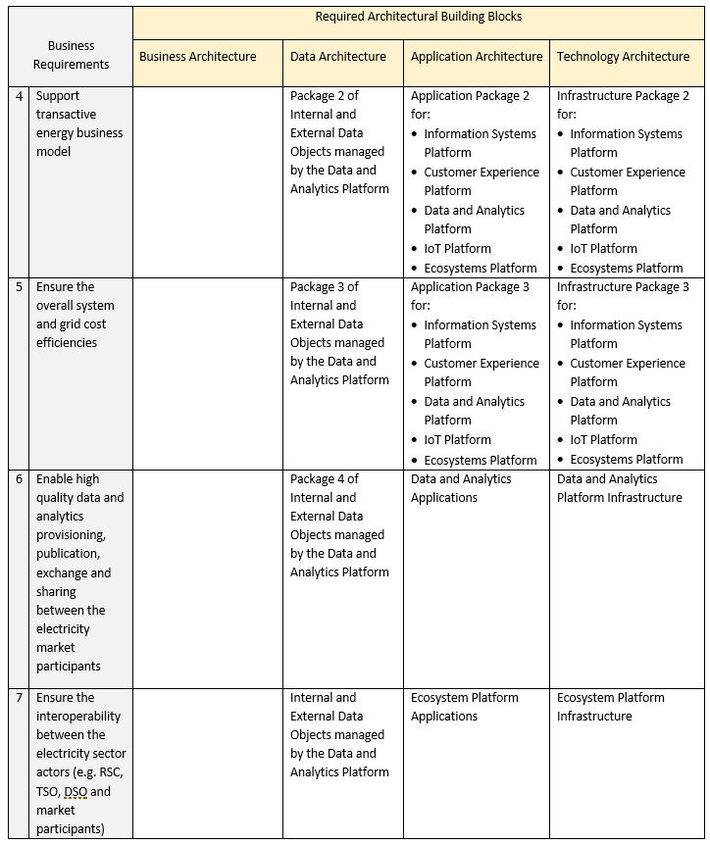
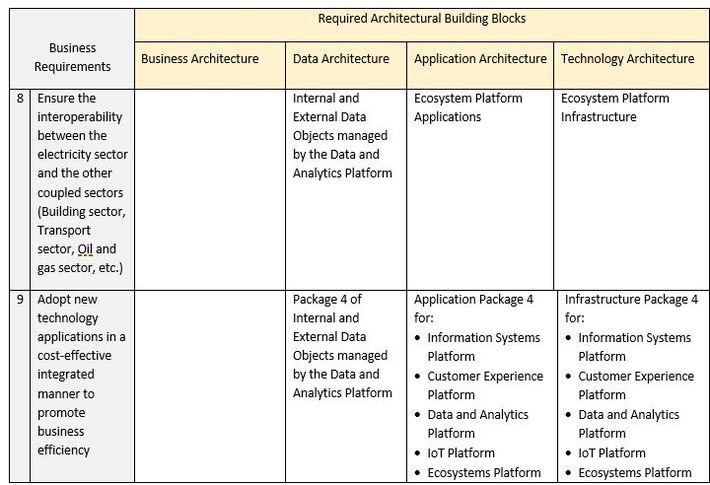
Table 1: TRANSPOWER high-level architectural requirements
The Future State Architecture of TRANSPOWER Data and Analytics Platform
Figure 1 depicts the conceptual-level architecture of TRANSPOWER digital business platform. Modernizing the existing D&A platform is one of the prerequisites for TRANSPOWER to build is digital business platform. Therefore, TRANSPOWER used the high-level architectural requirements shown in Table 1 and the modern data and analytics platform reference architecture described in Part 2 to develop the future state architecture of its D&A platform. Table 2 shows some examples of TRANSPOWER business requirements and their supporting digital business platform applications as well as the D&A platform architectural building blocks that support these applications. These D&A architectural building blocks are highlighted in red in Figure 2.
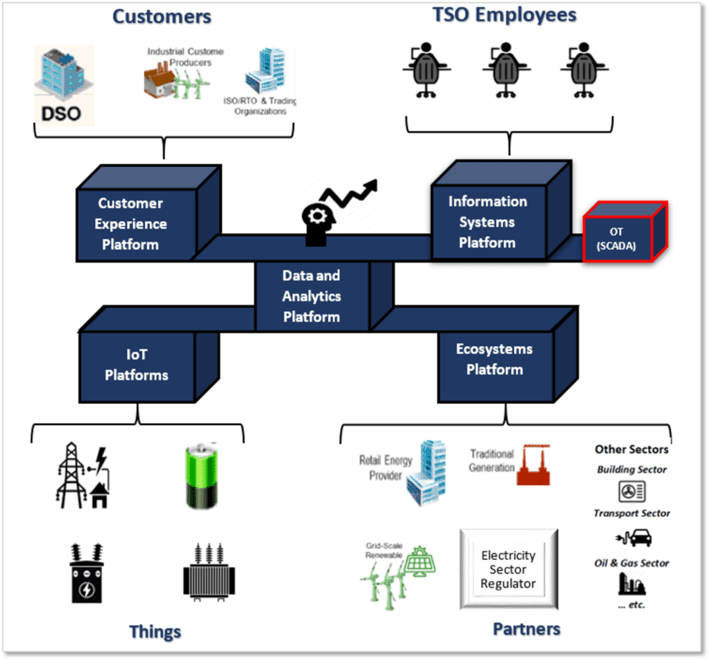
Figure 1. Conceptual-level architecture of TRANSPOWER digital business platform
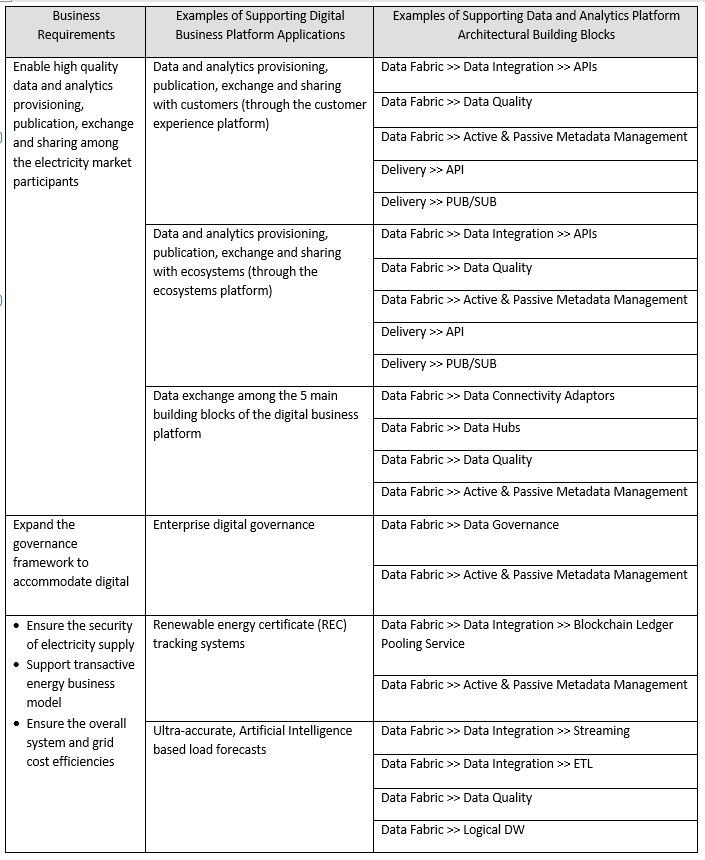
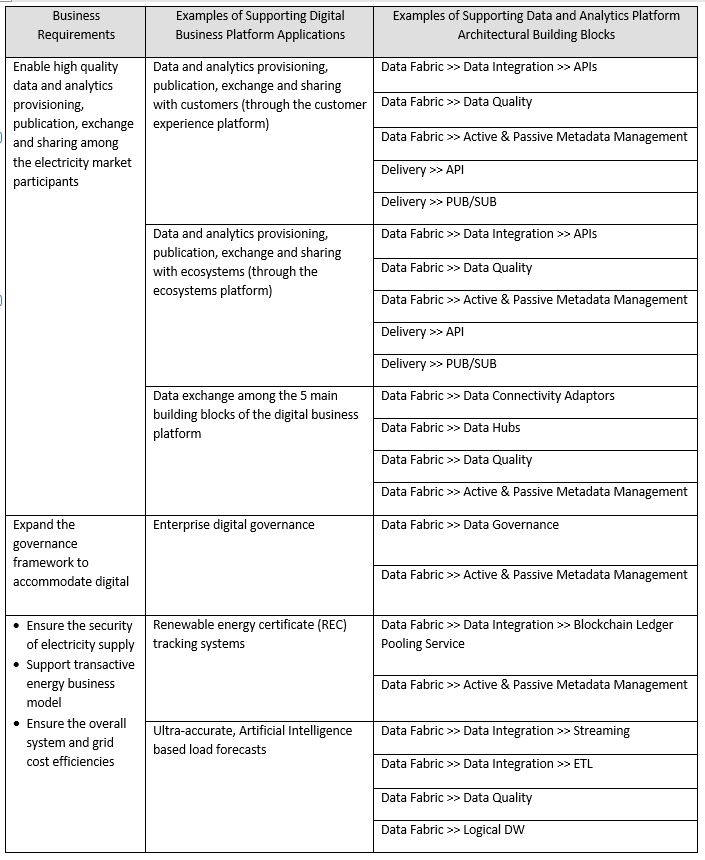
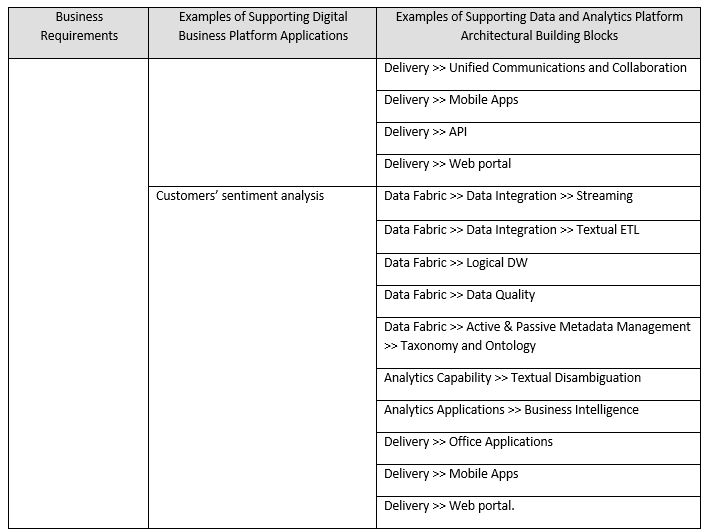
Table 2: Examples of TRANSPOWER business requirements and their supporting digital business platform applications and D&A platform architectural building blocks
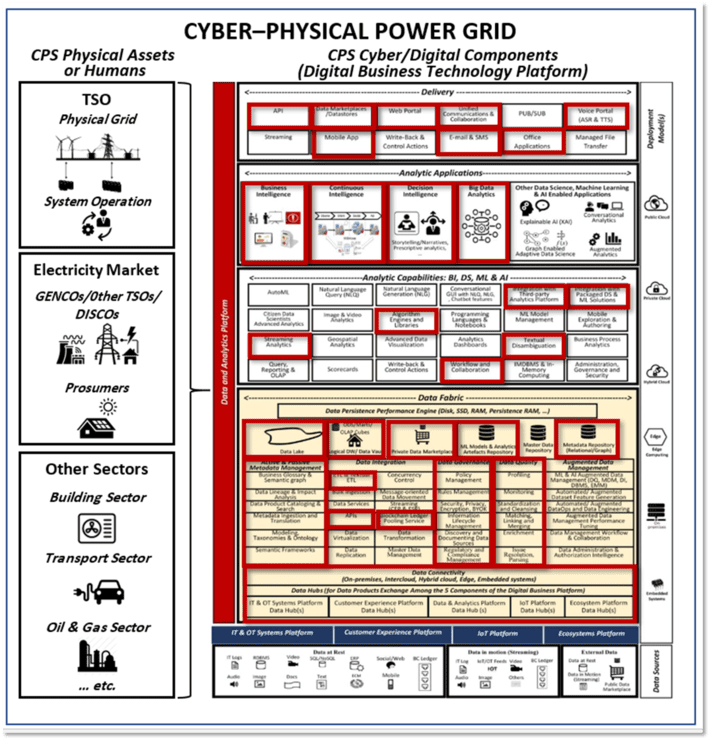
Figure 2: Examples of the new architectural building blocks
The Implementation Approach
After establishing the new human capital capabilities required for the implementation of the digital business transformation program, TRANSPOWER started to partner with relevant ecosystem players and deliver the program.
The implementation phase of the D&A platform modernization was based on the Unified Analytics Framework (UAF) described in Part 3. The new D&A applications and architectural building blocks described in Table 2 are planned and delivered using Part II of the UAF (including Inmon’s Seven Streams Approach). According to Inmon’s Seven Streams Approach, stream 3 is the “driver stream” that sets the priorities for the other six streams, and the business discovery process should be driven by the “burning questions” that the business has put forward as its high-priority questions. These are questions for which the business community needs answers so that decisions can be made, and actions can be taken that will effectively put money on the company’s bottom line. Such questions can be grouped into topics, such as customer satisfaction, profitability, risk, and so forth. The information required to answer these questions is identified next. Finally, the data essential to manufacture the information that answers the burning questions (or even automate actions) is identified. It is worth noting that the Information Factory Development Stream is usually built topic by topic or application by application. Topics are usually grouped into applications and a topic contains several burning questions. Topic often spans multiple data subject areas.
Figure 3 depicts the relationship between Burning Questions, Applications, Topics Data Subject Areas, and the Information Factory Development Stream.
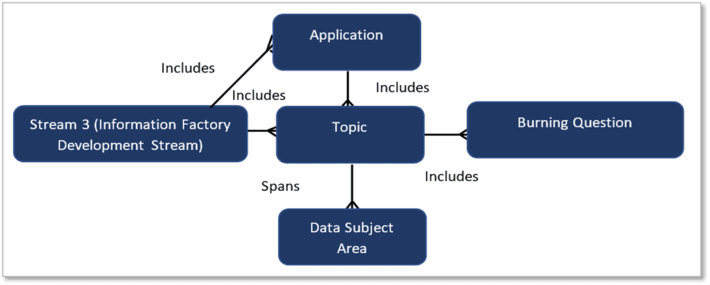
Figure 3. Relationship between Burning Questions, Applications, Topics Subject Areas, and the Information Factory Development Stream
Conclusion
In many cases, modernizing the traditional D&A platform is one of the essential steps an enterprise should take in order to build its digital business platform, therefore enabling its digital business transformation and gaining a sustainable competitive advantage. This four-part series introduced a step by step approach and a toolkit that can be used to determine what parts of the existing traditional D&A capabilities are missing or need to be improved and modernized in order to build the enterprise digital business platform. The use of the approach and the toolkit was illustrated by an example of a power utility company, however, this approach and the toolkit can be easily adapted and used in other vertical industries such as Petroleum, Transportation, Mining, and so forth.
